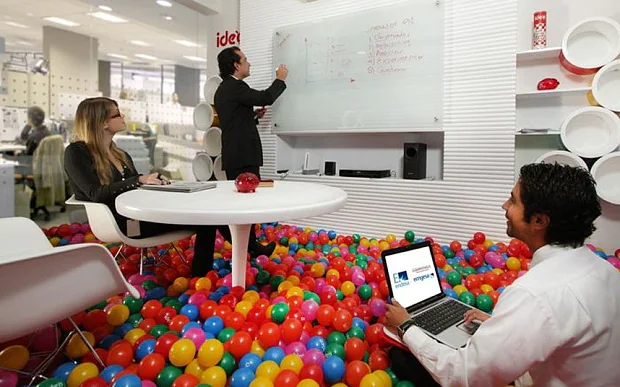
by Robyn Bolton | Jan 10, 2022 | Innovation, Leadership, Strategy
“Why doesn’t anyone bring me ideas?”
“Why doesn’t anyone ask questions during my meetings?”
“How can I get people to challenge my ideas?”
If you have asked any of these questions, you are not alone.
I hear these questions from managers to C-suite executives in every industry imaginable because they know that sharing ideas, asking questions, and challenging others are core behaviors in innovation.
The answers vary by person and the company, but all tend to fall under the umbrella of “Lack of Psychological Safety.”
No one wants to hear that the culture of their team or their organization isn’t “Psychologically Safe.” Does that mean that the culture is “Psychologically Unsafe?” That doesn’t sound good. That sounds like a lawsuit. And even if the culture isn’t “unsafe,” what does “safe” look like?
These are some of the questions that Timothy R. Clark sets out to answer in his book, “The 4 Stages of Psychological Safety: Defining the Path to Inclusion and Innovation.”
What is “Psychological Safety?”
Academics have studied Psychology Safety since the 1960s, but Amy Edmondson’s 1999 paper ushered it into daily use. Today, Psychological Safety is commonly defined as a shared belief that one will not be punished or humiliated for speaking up with ideas, questions, concerns, or mistakes.
Clark goes a step further to identify four types, or stages, of Psychological Safety:
- Inclusion Safety: People feel safe and accepted for who they are, including the different and unique aspects of themselves
- Learner Safety: People engage in the learning process by asking questions, giving and receiving feedback, experimenting, and making mistakes
- Contributor Safety: People use their skills and abilities to make a difference in the team and/or organization
- Challenger Safety: People speak up, challenge the status quo, and pursue opportunities for change or improvement
Each type builds on the other, which means that, as a leader, you can’t have a culture in which people challenge your ideas (Challenger Safety) if they don’t feel that they belong (Inclusion) AND comfortable asking questions AND are willing to work to improve or change things.
That’s a tall order as far as culture goes. Add to that the common belief that all four types of Psychological Safety are required for innovation, and it’s no wonder you feel overwhelmed by the task of creating an innovative organization.
How much Psychological Safety is required for innovation?
That depends on what you mean by “innovation.”
(sorry, I know that’s a lame “consultant” answer, but it’s true, so stick with me)
If what you mean by “innovation” is something that improves what you already do and how you do it (core innovation) or changes one element of what you do or how you do it (adjacent innovation), then you don’t need all four stages.
Contributor Safety is Required
Core and Adjacent innovation aren’t sexy. But, for most companies, they are sufficient to inspire and grow the business for at least 5-10 years.
As a leader, of a large existing business, with hundreds or thousands of employees and customers, multiple sites, and complex operations, you can’t possibly know everything that’s happening everywhere. So you rely on your employees to work hard, do their best, and bring all their skills and experiences to bear for the organization. You need them to ask, “How can we do this better?” and develop an answer. You need them to contribute.
To ensure that your employees contribute to operations AND innovations, you need to build and sustain a culture where people feel they belong, are encouraged to learn (even from mistakes), and contribute their thoughts based on their knowledge.
Challenger Safety is a Red Herring
Radical, breakthrough, and disruptive innovation are sexy. But it’s insanely hard because it requires the creation of a new business model AND the destruction of the existing one.
The good news is that most companies don’t need to destroy their existing business and replace it with something new. As a result, they definitely don’t need employees constantly challenging the status quo. Questioning the status quo by asking, “How can we do this better?” is fine. Asserting that everything needs to be changed or else is counterproductive.
As a leader, it’s a good idea to cultivate Challenger Safety with a small circle of trusted advisors. Even one person who has permission to challenge you is sufficient. That is how you get to the best idea and create the most value.
You don’t need an entire organization challenging each other and everything they do. That is how you get frustration, chaos, and destroy value.
It’s And, not Or
Psychological Safety is an innovation requirement AND a red herring.
If you know the type of innovation you want, what results you need, and when you need them, you can focus your efforts on creating and sustaining the right level and scope of psychological safety required to deliver on those goals.
Which makes me wonder….
What type of Psychological Safety does your team need?
What do you do to build Psychological Safety?
How do you encourage people to share ideas and ask questions?
Share your answers in the comments. I promise to respond to each one AND I’m certain your fellow innovators will thank you.

by Robyn Bolton | Jan 4, 2022 | Customer Centricity, Innovation, Tips, Tricks, & Tools
Before we go any further, I need to be clear that I absolutely, totally, and completely believe in Jobs to be Done. In fact, more than once, I have uttered the words, “Jobs to be Done is a hill I will die on.”
Which means that I died a little inside when a client recently said to me,
“Jobs to be Done is amazing. ‘Jobs to be Done’ sucks.”
He’s right (as much as it kills me to admit that).
In an academic setting, the term makes perfect sense.
I understand where the term comes from and applaud the logic and clarity of the analogy at its core. Just as a company hires a person for a task or set of functions (a job), a person “hires” a product or service because they have a problem to solve or progress they need to make. They have a Job to be Done.
Managers and executives who work with me to learn Jobs to be Done and how to apply it quickly grasp the concept. After just one-hour, they can re-tell and explain the Milkshake story, identify functional/emotional/social jobs in role plays, and swear that the approach completely changes how they see and think about their business.
In the real world, the term is profoundly confusing.
Then the managers and executives, believing so strongly in its ability to transform the business, decide to roll it out to the organization. They talk about it, send articles about it, and train everyone to apply it in customer interviews. With great excitement, everyone from employees to senior leaders fan out to talk to customers, take copious notes, discuss insights with their teams, and happily declare that their customers’ Jobs to be Done are to buy the company’s products.
Here’s a quick (and entirely fictional) example:
- Chocolate Chip Cookie Company (CCCC): Hello, Ms. Customer. We want to learn more about your snacking habits. When you snack and why, what you like to snack on and why, stuff like that.
- Customer: Great! I love to snack on chocolate chip cookies, but the store-bought ones are expensive, and they’re filled with preservatives, and I’m trying to be healthier. I’d make my own, but I don’t have time.
CCCC returns to the office and declares that the customer’s Job to be Done is to buy cheap all-natural cookies from a store.
Ummm, no. Not even close.
The customer’s Jobs to be Done are to be healthy, manage her money, save time, and feel good about what she eats. CCCC’s job (literally, the company’s reason for business) is to make cookies that customers want to buy.
What CCCC identified as a customer Job to be Done is the company’s job (business). In other words, it’s a solution.
Why the confusion?
In the real world, people already have precise definitions of “job” in their heads. They have a job (role). They have a job to do (responsibilities, deliverables). Their colleagues have jobs (roles and responsibilities). They have job openings (hiring needs).
By assigning a new meaning to the word “job,” we’re not only asking people to change how they think and talk, but we’re also asking them to adopt an entirely new understanding of and use for a common word.
Imagine being told that “orange” means both a color and a cooking technique. It makes the brain hurt.
What’s the solution?
I don’t know. But here’s what I’ve tried.
- Problem
- Pro: It’s part of the definition of a Job to be Done, and we all know what a problem is
- Con: It focuses customer conversations on existing pain points and sets a negative tone in interviews, making it challenging to discover solutions that delight the customer and, as a result, could inform how the problem is solved.
- Need
- Pro: It’s the OG of consumer research, a term we all know and use
- Con: It anchors customer conversations in functional Jobs to be Done and makes it difficult to surface the emotional and social Jobs that drive decisions and behavior.
- Customer Job to be Done
- Pro: Uses the original term while being VERY clear that the focus is on the customer
- Con: It’s a lot to say and even more to type, and people still fall back into their traditional definitions and use of the term job
What have you tried? What are your suggestions?

by Robyn Bolton | Dec 14, 2021 | Innovation
Have you ever said to someone, “I wish you were more like (fill in the name)?”
How did that go?
Not so good, right?
At least one or both of you probably became frustrated, disappointed, and maybe even heartbroken. You learned that even though people evolve and grow, they don’t change. The only thing you can change is your expectations of them.
Have you ever said about your company, “We will be more like (Apple, Amazon, Netflix, some other innovative company)?”
How did that work out?
Not so good, right?
You probably ended up frustrated, disappointed, and maybe even heartbroken. You learned that even though companies evolve and grow, they don’t change. The only thing you can change about a company is your expectations of it.
So then, why on earth do experts preach that companies must create a “culture of innovation” to be innovative?
93% of companies do not have a culture of innovation
In a fascinating global meta-study of corporate cultures, researchers identified eight cultural archetypes. The two most common were Results (89% of companies), defined by achievement and winning, and Caring (63% of companies), defined by relationships and mutual trust. The only culture explicitly associated with innovation was Learning, a culture defined by exploration, expansiveness, and creativity, and present in only 7% of global companies.
This means that 93% of companies globally are not innovating or that 93% have found ways to innovate and grow without having a culture of innovation.
Spoiler alert, it’s the latter.
This is excellent news (unless you’re one of the experts preaching “culture of innovation”) because it’s proof that even though you can’t change your company’s culture and create a culture of innovation from scratch, you don’t need to in order to innovate!
However, if you want your company to innovate, you can and need to do these three things:
- Leverage the aspects of your company’s culture that support innovation
Enablers of innovation can be found in every one of the seven cultural archetypes that don’t explicitly include innovation. They may be overwhelmed by other aspects of the culture, but the seeds of innovation are there. You need to nurture them.
Here are some examples:
- Results cultures want achievement and winning, so encourage people to ask, “How can we do better constantly?”
- Caring cultures value collaboration and trust, so encourage diversity of perspectives when identifying and solving problems.
- Order cultures are methodical, so use that disciplined approach to surface and solve problems, especially those related to operational efficiency.
- Purpose cultures value idealism and altruism, so use those to motivate people to experiment and take risks en route to achieving a greater good
- Safety cultures reduce risk by planning ahead, so develop strategies and plans to respond to future scenarios.
- Authority cultures are decisive and bold so use that to make decisions and pivot when new information becomes available.
- Enjoyment cultures are fun and playful, so use that child-like spirit to dream and create new things.
2. Evolve the culture to accommodate one additional element of innovation
Just as every culture has the seeds of innovation within it, they could also benefit from at least one new behavior that stretches, but doesn’t break, the cultural comfort zone.
For example:
- In Results cultures, learning could be considered an achievement on par with achieving a specific desired outcome
- In Caring cultures, questioning and challenging others in a constructive way could be a valued part of the collaborative process.
- Order, Safety, and Authority culture could encourage and even deliberately create time and space to question the status quo and consider multiple options.
- Purpose and Enjoyment cultures could embrace decision-making and action as critical elements of exploration and contributing to a greater good
3. Start Small
Change happens slow, then fast. Don’t start by trying to leverage and evolve the culture on a grand corporate scale. While some people will embrace what you’re trying to do, they’re likely to be scattered across the organization, islands of support in a sea of doubt, resistance, or (my favorite) malicious compliance.
Instead, start with a function or even a team. Enroll them in the evolution you’re trying to drive and ask them for their perspective and involvement. Make them your partners in evolution, not just the executors of your vision.
Everyone wants change. No one wants to be changed.
So, stop trying. Stop listening to all the experts and consultants who say you should change. Stop trying to make your company something it’s not.
Instead, embrace your company’s culture for what it is. Leverage the parts of it that can nurture and accelerate innovation. Evolve small parts of it to be better at encouraging innovation. Start with a small team of committed Evolutionaries, prove what’s possible, and watch it spread.
Who knows, maybe executives at some other company will look at yours and say, “We need to change to be more like them.”

by Robyn Bolton | Dec 2, 2021 | Innovation, Stories & Examples
On April 26, 1937, Nazi warplanes, at the request of Franco’s Spanish nationalists, bombed Guernica, a town in northern Spain’s Basque Country. Bombs rained down on the city center for two hours, killing hundreds of people, primarily women and children.
On May 1, Pablo Picasso read an eyewitness account of the bombing and immediately began sketching. Over ten days, he created more than 50 sketches – some barely more than scribbles, others with crisp and clear pencil lines forming tragic and horrifying figures, and yet others in bold hues of yellow, purple, and blue.
On May 11, Picasso stretched and prepared a canvas so massive that it could not stand upright in his studio.
In July 1937, Guernica was unveiled at the Spanish Pavilion at the Paris International Exposition. At approximately 11.5 feet tall and 25.5 feet wide, the grey, black, and white oil painting with images showing the horrors of war was met with mixed reviews.
Today, it is regarded as one of the most moving and powerful anti-war paintings ever created and hangs in a custom-built gallery at Madrid’s Museo Reina Sofia.
What does this have to do with innovation?
Look again at the timeline above. In only ten days, Picasso learned about Guernica’s bombing, was inspired to create something in response to it, drew initial sketches, and started work on the final product.
To translate this into a (somewhat poor) analogy for innovation, in only ten days, Picasso went from identifying a need (respond to the terrorist act) to brainstorming a solution (make a painting), to developing prototypes (sketches), to preparing to launch (stretching the canvas).
Ten days.
Of which almost all were spent prototyping.
How does that compare to your innovation process?
How much time do you spend identifying a need? Brainstorming solutions? Developing prototypes?
If you’re like most companies, you probably have a 10/80/10 split – 10% of your time understanding customer needs, 80% of your time in brainstorming, and 10% of your time developing and testing prototypes.
Why?
If innovation is all about solving problems and the number one reason startups and products fail is lack of product-market fit, why do you spend most of your time coming up with ideas instead of making sure they’re the right ideas?
(Don’t) Go Big or Go Home
You know that listening to your customers is crucial because they ultimately decide the fate of your innovation. You know that prototyping is essential because all ideas are initially more wrong than right.
Yet, most companies adopt a “Go Big or Go Home” philosophy. They push innovation teams to stop worrying about the “details” and “fail fast” by getting to market (and revenue) ASAP.
But this approach puts the project and the company at risk by increasing the likelihood that money, people, and reputations will be spent on projects that do not solve a pressing customer need and, as a result, fail in the market.
(Do) Go Small to Go Big
A better approach, one more likely to lead to market success, is to “Go Small to Go Big.” Instead of a 10/80/10 split, spend 40% of your time finding the problem, 10% ideating, and 50% refining your idea through prototypes.
After all, if Picasso wasn’t willing to start painting until he first did some sketches, why are you willing to spend hundreds of millions of dollars to launch something you never prototyped?

by Robyn Bolton | Nov 20, 2021 | Innovation, Tips, Tricks, & Tools
Everyone knows about brainstorms but did you know there are three other types of storms that can blow you to your innovation destination?
Questionstorms
First introduced in The Innovator’s DNA, these storms happen at the start of an innovation effort and seek to surface all the assumptions, expectations, concerns, and actual questions currently locked in individuals’ brains.
The value of this session is that it makes the implicit explicit, removes hidden agendas, eliminates guessing games, and establishes a culture of curiosity, exploration, and learning versus demands and fear.
You run Questionstorms just like brainstorms – give everyone 3-5 minutes to silently write a long list of thoughts. Then, give everyone another 3-5 minutes to turn each thought into a question and write the question on a sticky note. For example, “We need to realize $250M revenue in Year 3 to make this work” becomes “How might we design and run an innovation function that generates $250M in Year 3?” Then, each person reads their sticky notes to the group before placing them on a wall. The goal is to ask 50 questions before you start grouping and prioritizing.
Intuition-storms
I first learned about this storm from IDEO and am genuinely surprised by how effectively they re-energize teams and propel the work forward. These storms happen after the first phase of a project, usually the research phase.
An Intuition-storm’s value comes from its ability to pull the team out of the minutiae of the previous weeks and months of work and back up to seeing the big picture. In the process, they rapidly synthesize insights that may have gotten lost in the more traditional left-brained approach of gathering and summarizing details.
Again, just like brainstorms, start by posing the big question that the project intends to answer, then give people 3-5 minutes to write down their answers. Too much time and they may dig into documents and details, too little time and you’ll get recency bias in the responses. Then go around the room and share. Once everyone has shared, discuss the elements in common and the unique ones. Be clear that this isn’t about getting to THE answer, but about tapping into the full of everyone’s experience, expertise, and wisdom.
Brainstorms
By now, we all know what it means to brainstorm, and we’ve all probably been part of one or two brainstorming sessions. But do you know where it all started?
In the mid-nineteenth century, “brainstorm” was a colloquial term for “fit of acute delirious mania; sudden dethronement of reason and will under the stress of strong emotion, usually accompanied by manifestations of violence.” Not exactly the type of thing most businesspeople aim for.
However, in 1939, advertising executive Alex F. Osborn got so frustrated with his employees’ ability to generate creative ideas for ad campaigns that he developed a new approach dubbed “organized ideation.” This approach, later renamed to “brainstorm” by his employees, was governed by four rules:
- Go for quantity
- Withhold criticism
- Welcome wild ideas
- Combine and improve ideas
While the methods and tools for brainstorming have evolved over the past 80+ years, it’s a testament to Osborn’s approach that the rules have not.
Assumption-storms
Assumption-storms are rooted in the Discovery Driven Planning approach introduced by Rita Gunther-McGrath. These storms should occur as soon as you’ve picked the top 2-3 ideas from brainstorming that you want to pursue
By forcing the team to acknowledge that there are more unknowns than knowns at this point in the process and to share their assumptions and questions, Assumption-storms enable the team to quickly identify and test the most critical assumptions. This process of rapid testing of individual assumptions ensures that if a “deal-killer” assumption is wrong, the project is quickly killed and a new one started.
To Assumption-storm, gather your team around the idea(s) to be pursued and list all the things you think you know but can’t prove beyond a shadow of a doubt AND all the things you don’t know. Then rate each item (assumption) from High to Low based on how confident you are that the assumption is true and the negative impact to the idea if the assumption is wrong.
Because we all tend to be overconfident in our own knowledge, I like to base the High/Medium/Low scale for confidence based on what you would bet. High confidence means you’re willing to bet your annual salary, Medium confidence means you’ll bet your next paycheck, and no confidence means you bet a cup of tea.
Once assessed for confidence and impact, the assumptions with Low Confidence and High Impact are identified as deal-killers, and you can start to develop the experiments you’ll run to help you build confidence (or kill the idea) in the next 90-days.
Storms are a-brewin.’
And that’s a good thing. As you progress through your innovation efforts, you’ll face many storms. Some are damaging and unexpected. Luckily, these four can not only be planned, they also propel you forward.

by Robyn Bolton | Nov 12, 2021 | Innovation, Leadership, Tips, Tricks, & Tools
“We are not lost. I know exactly where we are. Granted, it’s not where we want to be. Where we want to be is over there somewhere. I just need a moment to figure out how we get there.”
– Me to my husband every time we go to a new city and I convince him to go on a walk.
The Big Squiggly
Last week, the 13th class of Driving Intrapreneurship graduated and, as always, I was tremendously proud of the executives who, in the span of 8 short weeks, went from identifying a problem to writing an innovation business plan to secure funding and resources to continue their work.
One of the things we talk about constantly in the course is “The Big Squiggly” – a simple line drawing that starts off as a big, knotty, crumpled, chaotic mess before eventually sorting itself out and turning int a clean and simple straight line.
We spend most of the 8 weeks in The Big Squiggly and it’s even more uncomfortable and stressful than people imagine it will be when I first introduce the concept. But as the weeks go on, they get a little more comfortable and, by graduation, the mere mention of The Big Squiggly elicit knowing nods and confident smiles.
What To Do When You’re In The Big Squiggly
Innovators live in The Big Squiggly. Some of us love it there and some of us endure it because really, all we want to do, is bring order to chaos. Most of us in The Big Squiggly are like my students – uncomfortable at best and deeply stressed at worst.
In fact, being in The Big Squiggly can feel like being in the middle of a crisis.
Interestingly, they way innovators work through The Big Squiggly is very very similar to how leaders are taught to manage crises. Here is the 6-step approach that Harvard Professor Dutch Leonard teaches in his Crisis Management for Leaders course:
- Establish a team and process to identify, understand, and reframe issues
- Assemble a team with diverse perspectives
- Engage in iterative, agile problem-solving
- Create conditions (facilitated deliberation, diversity, psychological safety, inquiry not advocacy) for successful agile problem-solving
- Execute chosen actions but treat them as tentative and experimental
- Set reasonable expectations that you are making your best effort, learning rapidly, not everything will work, and we’ll keep working until it does
Hmmmmm, sounds exactly like how innovation works, too.
We’re all in The Big Squiggly Together
Everyone is innovating right now. From big companies responding to the Great Resignation and supply chain disruptions, to individuals trying to figure out whether and when to work form home or the office . We’re all doing something different, hoping it creates value, and pivoting until it does.
Yes, we are being forced to innovate and, like all innovation efforts, we’re not getting everything perfect but we’re learning a heck of a lot. Just imagine what we could do if we keep innovating when the crisis ends. Imagine the problems we could solve and the things we could create if we choose to continue to listen, learn, and experiment!
My friend, Dr. Anne Waple, has been a climate scientist for over 25 years. About a year ago, she spoke at Speakers Who Dare about her vision for Earth’s Next Chapter. Even in the early days of America’s response to COVID-19, Anne encouraged people to not just focus on problems because, when we do that, we don’t actually solve them. Instead, she asserted, driving positive, big, lasting global change starts when we ask questions about the world we want and believe we can have fun making it happen.
Together, We Can Get Out of The Big Squiggly
We are not lost. We’re just not where we want to be right now.
Yes, The Big Squiggly is uncomfortable and stressful. But it’s not forever. By asking questions about the world we want, we can define “over there somewhere.” How we get there is through innovation and we know and are already practicing the steps.





